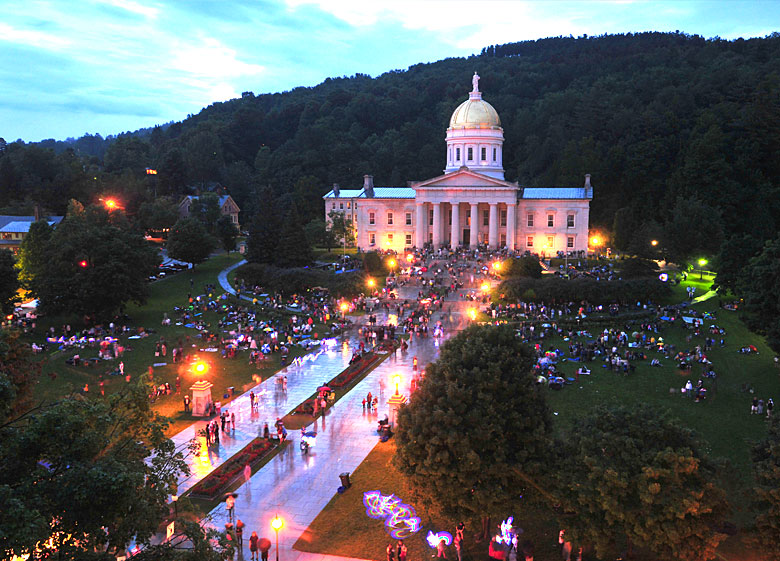New England is known for its beautiful fall foliage and its residents’ down-to-earth outlook on life. Vermont is no exception to this perception.
A combination of green mountains, forests, valleys, and wetlands comprise the state’s landscape, which has been home to the Abenaki people for more than 12,000 years. Other Native American Tribes that once inhabited the area were the Mohican, the Pennacook, the Pocomtuc, and the Massachusett.
In July 1666, the French established a fort and settlement at Fort St. Anne in Isle La Motte — the first European settlement in the area. In 1724, the British built the first permanent European settlement and claimed the area. The area existed as an independent republic for a period before joining the Union on March 4, 1791, as the 14th state.
A foodie’s paradise, Vermont is home to makers of cheese, maple syrup, cider, craft beer, and the most famous of all, Ben & Jerry’s Ice Cream. It is also a haven for artists, similar to its neighbor, New Hampshire.
Next time you’re in the Green Mountain State — maybe taking in the beautiful bright red, orange, and yellow fall leaves or having a cider during a ski trip — stop by one of Vermont’s National Monuments. Explore the state’s artist history — and enjoy a cup of Americone Dream or Chunky Monkey ice cream!
The Homer Noble Farm: “The Road Not Taken” may lead to the Robert Frost Farm, also known as the Homer Noble Farm. The National Historic Landmark is located in Ripton, Vermont, a small mountain town with 587 residents. The 150-acre property in the Green Mountains is where celebrated American poet Robert Frost lived and wrote from 1939 until he died in 1963. Frost, the first poet laureate of Vermont and four-time Pulitzer winner, purchased the Homer Noble Farm to have a summer residence. The property included a large 19th-century farmhouse and a quaint wooden cabin. Middlebury College bought the property in 1966, but the grounds are open to the public. Visitors can take a guided tour of the grounds, but the interior of the cabin and farm are restricted.
Photo Courtesy One New England
The Vermont State House: The state capitol is located in Montpelier, Vermont, the smallest city to serve as the capital of a U.S. state. Thomas Silloway designed the building in the Neoclassical style, which was popular in the early 20th-century public buildings, with Greek porticos, columns, and pediments. The Vermont State House became a National Historic Landmark on Dec. 30, 1970. David Schütz is the state curator and one of the people intimately involved with the work to restore the building that began in the 1980s. The state house is open to the public from Monday through Saturday. Visitors can explore some of Vermont’s essential art pieces, as well as the governor’s office, the Cedar Creek Reception Room, the Hall of Inscriptions, and the legislative chambers.
Photo Courtesy Department of Buildings and General Services: State Curator’s Office
Naulakha: Also known as the Rudyard Kipling House, this historic shingle-style house — a wood construction that typically blends into natural surroundings — is located on 10 acres in Dummerston, Vermont. Kipling wrote renowned works, like Captains Courageous, The Jungle Book, The Day’s Work, and The Seven Seas. He built the house in 1893 and made it his home until 1896. It was named after the Naulakha Pavilion, a structure in the Lahore Fort in Pakistan, designed in the Bengali Do-chala style. The estate was built for luxury, with a pool, sunken gardens, and a full tennis court — a first in Vermont’s history. In 1993, the house was designated a National Historic Landmark for its association with Kipling. Naulakha, which is owned by the Landmark Trust, is available to rent.
Photo Courtesy Daderot





